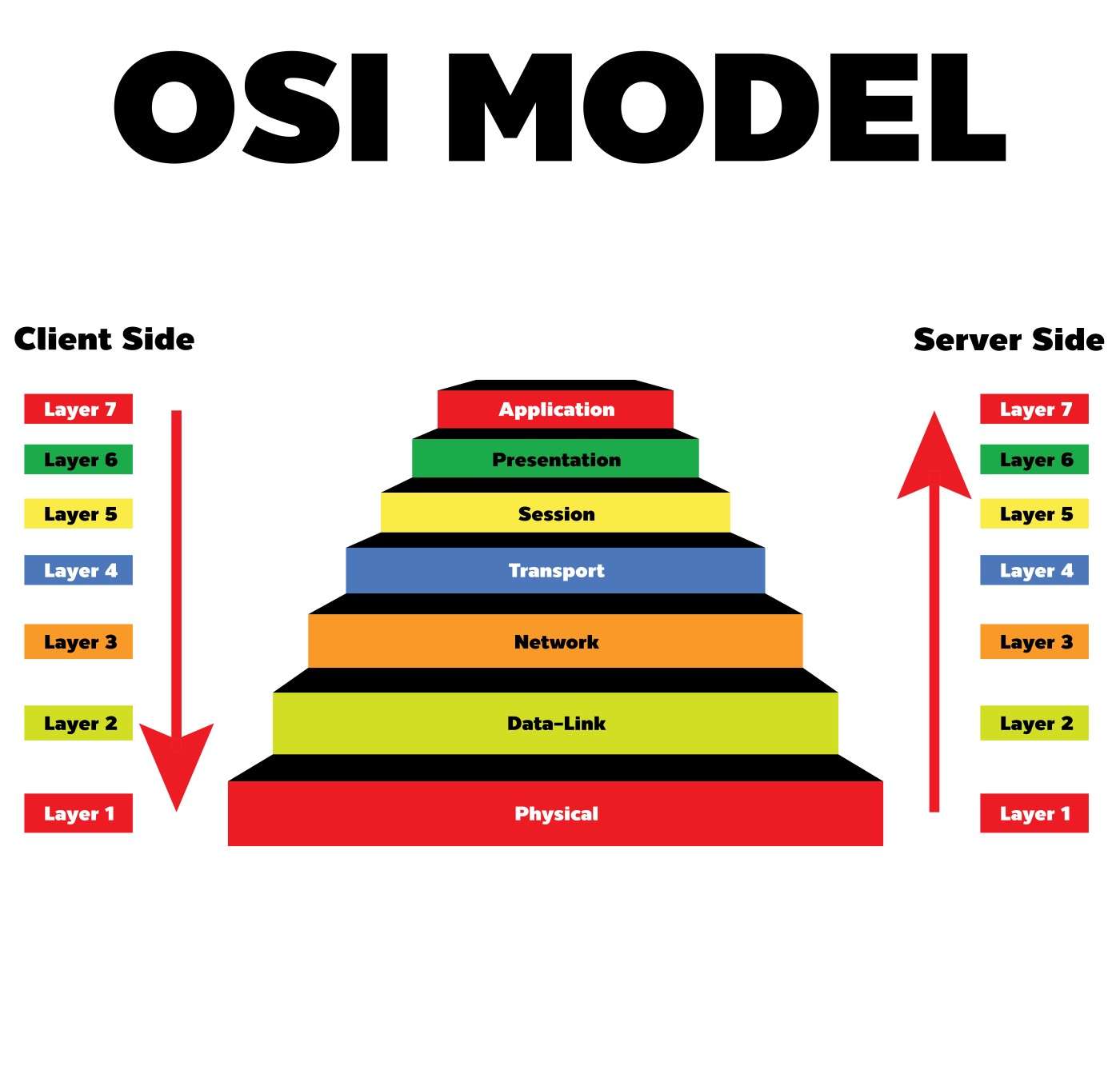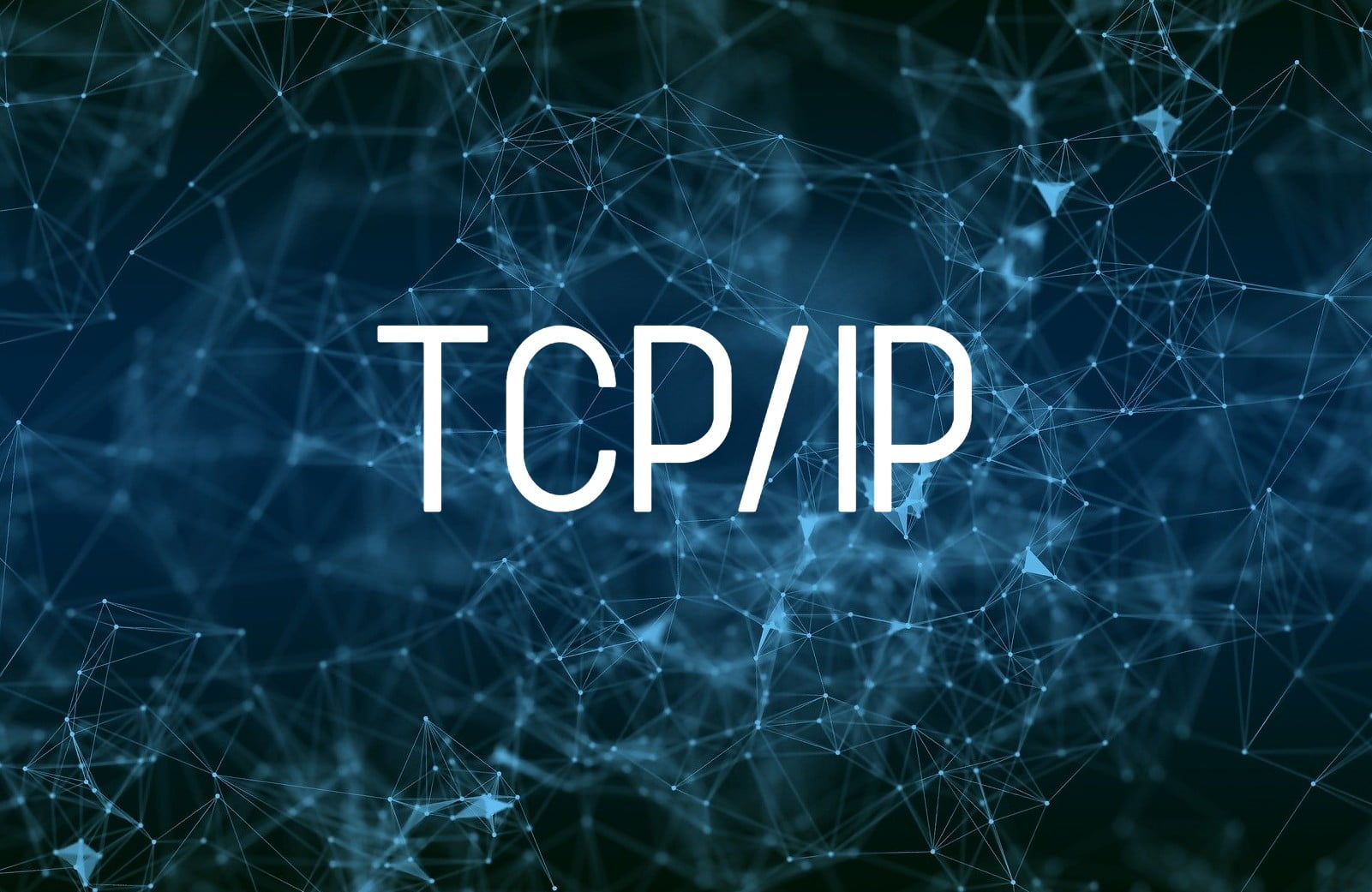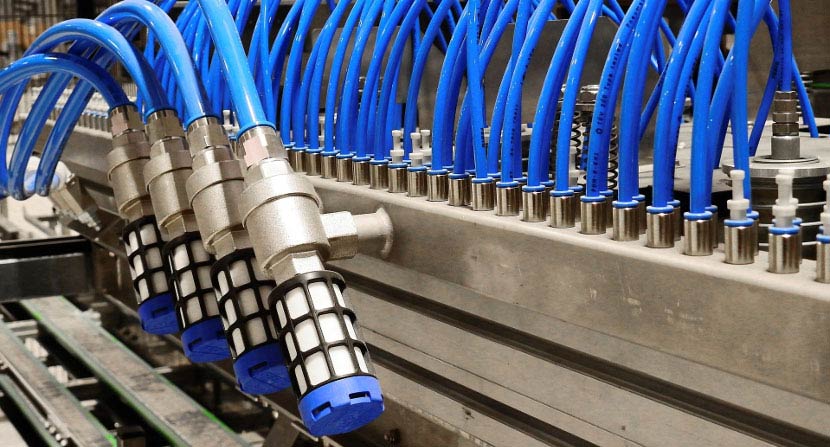The OSI model: basics of the network stack
Published

Introduction to the OSI model: structure and purpose
The OSI model, also known as the Open Systems Interconnection model, is a fundamental concept in the world of network technology. It was developed by the International Organization for Standardization (ISO) to standardize and facilitate communication between different computers and devices in a network. The OSI model serves as a reference framework that divides the structure and functionality of a network protocol into seven clearly defined layers. Each layer in the OSI model has a specific task and responsibility that enables data to be transferred and processed from one layer to the next. The layers are arranged hierarchically, with each layer building on services of the layer below and providing services for the layer above. The seven layers of the OSI model are as follows: 1. application layer: this top layer is closest to the users and applications. It provides services for the application programs and enables communication between different end users. 2. presentation layer: This layer is responsible for data formatting and conversion. It ensures that data is transferred in a suitable format for communication. 3rd session layer: The session layer determines how sessions are established, maintained and terminated between devices. It enables the management of communication sessions. 4th transport layer: Services for data transmission are provided here. This layer can split the data into smaller packets and ensure that they are transmitted reliably and in the correct order. 5th Internet layer: The Internet layer is responsible for addressing and routing data packets. It enables data to be forwarded across different networks. 6. switching layer: This layer takes care of the logical connection between devices in the same network. It ensures that data packets are forwarded on the basis of hardware addresses. 7th bit transmission layer: The lowest layer is responsible for the physical transmission of data. Here, signals are transmitted in the form of bits and converted into electrical, optical or other physical signals. The OSI model is an important guideline for the development and operation of networks and enables the interoperability of different devices and protocols. It provides a common understanding and language for network engineers and developers worldwide and forms the basis for today's networked world.
The seven layers of the OSI model in detail
The OSI model, consisting of seven layers, is a key concept in network technology and is used to structure and simplify communication between different devices and computers in a network. Each layer fulfills a specific role and contributes to efficient data transmission: 1. application layer: the top layer is directly connected to applications and services for end users. This is where programs such as web browsers, email clients and file transfer applications run. It enables interaction between applications and network protocols. 2nd presentation layer: This layer takes care of data formatting and conversion. It ensures that data is prepared for transmission in a suitable format. Encryption and decoding of data is an important part of this layer. 3rd session layer: This is where sessions between devices are established, managed and terminated. The session layer enables the coordination and management of communication sessions, which is particularly important when data is transferred in several steps. 4. transport layer: This layer is responsible for the reliable transmission of data. It divides data into smaller packets, ensures the correct sequence and ensures that lost packets are retransmitted. Well-known protocols in this layer are TCP (Transmission Control Protocol) and UDP (User Datagram Protocol). 5th Internet layer: The Internet layer is responsible for the addressing and routing of data packets. It enables the forwarding of data between different networks and is therefore crucial for global networking. 6th network layer: This is where the logical connection between devices in the same network is established. This layer uses hardware addresses to forward data packets to the correct target device. Routers work at this level. 7. bit transmission layer: The lowest layer is responsible for the physical transmission of data. It regulates the transmission of signals and bits via physical media such as cables, optical fibers or wireless connections. The OSI model is an indispensable tool for understanding and designing network architecture. It helps network engineers to diagnose problems, ensure interoperability between different devices and develop efficient communication protocols. Without the OSI model, the modern networked world would be inconceivable.
Communication in the OSI model: How data flows through the layers
Communication in the OSI model takes place through a structured process in which data packets are transferred from one layer to the next. This process is known as layer-to-layer communication and is crucial for efficient data transmission in networks. The process begins in the application layer, where user applications, such as web browsers or email clients, generate data. This data is then passed to the underlying presentation layer where it is formatted and encoded to ensure it is in a suitable state for transmission. The formatted data is then passed to the session layer, which establishes and manages sessions between the devices. The session layer can split the data into different segments to facilitate transmission. The transport layer takes care of splitting the data into packets to ensure that it can be transferred efficiently. This is where protocols such as TCP or UDP come into play to ensure that the data is transmitted reliably or quickly. The Internet layer handles the addressing and routing of the data packets to ensure that they reach their destination, even if they have to cross different networks. In the network layer, data packets are forwarded using hardware addresses. Routers work at this level to direct the packets on their way through the network. Finally, the data reaches the physical layer, which takes care of the physical transmission of the data via the network medium. During this layer-to-layer communication, headers and trailers are added at each stage to provide information for the transportation and processing of the data. This allows the data packets to travel securely and efficiently from one device to another. Understanding this communication process in the OSI model is critical to diagnosing network problems, developing protocols and ensuring interoperability between different devices. It forms the backbone of modern network technology and enables seamless communication in the digital world.
OSI vs. TCP/IP: A comparison of network models
The OSI model and the TCP/IP model are two of the best-known network models used to describe and organize network protocols and technologies. Both models offer a structured approach to describing how networks work, but differ in some key respects. The OSI model, developed by the International Organization for Standardization (ISO), consists of seven layers and provides a very detailed breakdown of network functions. It is a comprehensive reference model that serves as a basis for the development of network protocols and technologies. The OSI model offers a more general perspective on networks and can be applied in different contexts. In contrast, the TCP/IP model consists of only four layers: Application, Transport, Internetworking and Network Interface. It is less detailed than the OSI model and focuses more on the actual protocols used on the Internet. The TCP/IP model is closely linked to the creation of the Internet and forms the basic framework for Internet communication. An important difference between the two models is the number of layers and their division. The OSI model contains additional layers, such as the presentation layer and the session layer, which are not explicitly present in the TCP/IP model. This can lead to a more complex view, but is also more flexible in terms of application to different types of networks. The choice between the OSI model and the TCP/IP model depends on the specific requirements and application context. The OSI model is well suited for academic and theoretical purposes as well as for the development of new protocols and technologies. The TCP/IP model is excellent for practical implementation and understanding of the Internet. In practice, the protocols of the TCP/IP model, such as TCP, UDP and IP, have proven to be dominant and form the basis of today's Internet. Nevertheless, the OSI model remains an important concept for network technicians and engineers as it provides a comprehensive perspective on how networks work.








